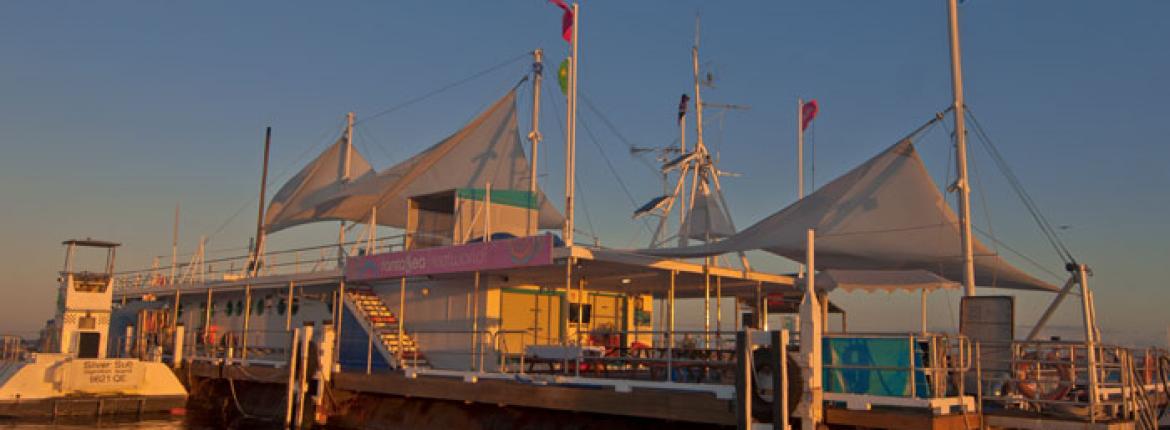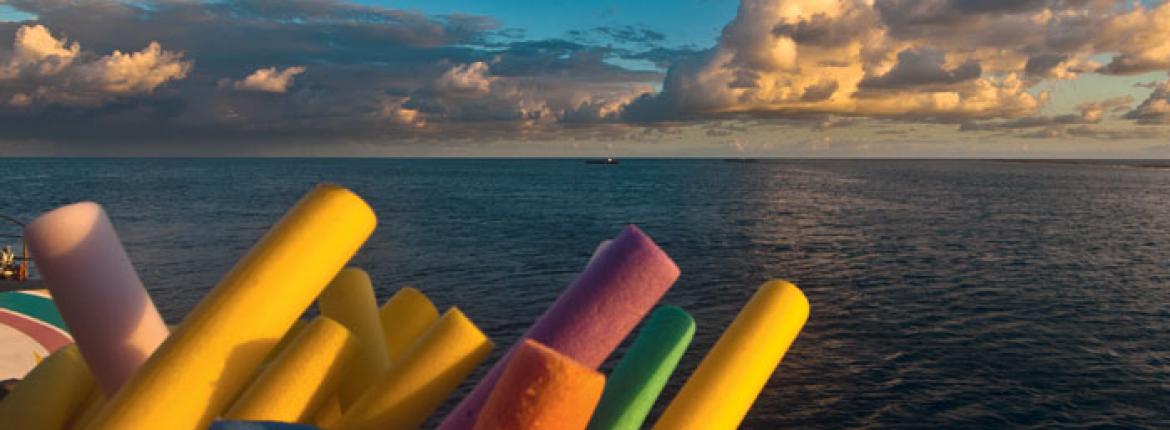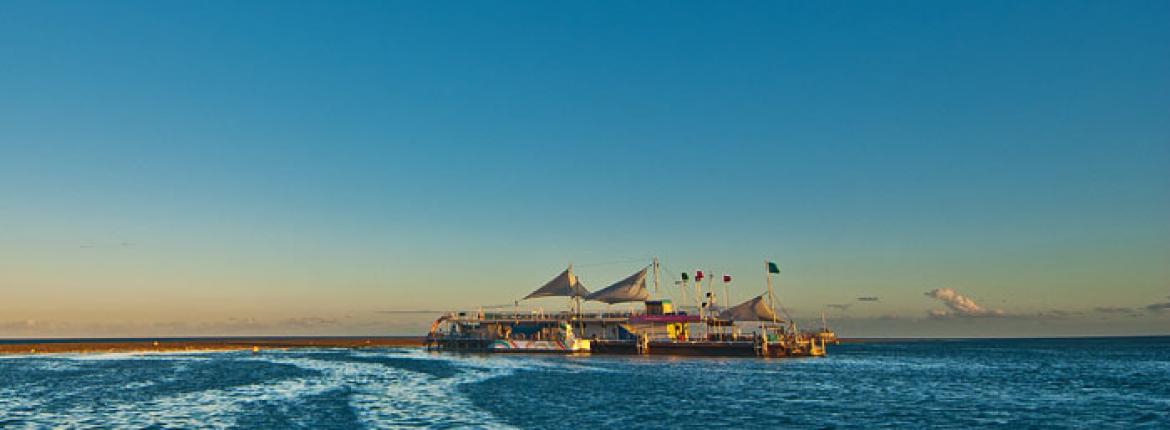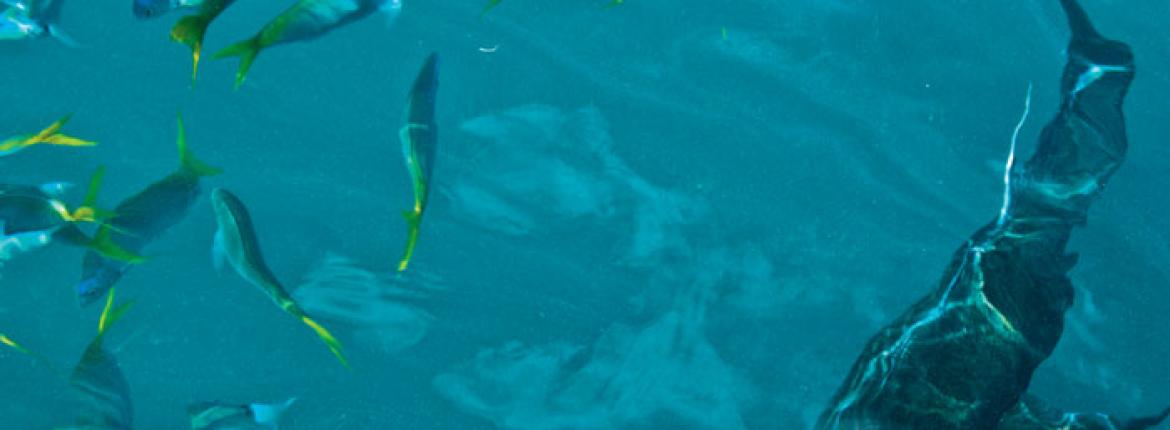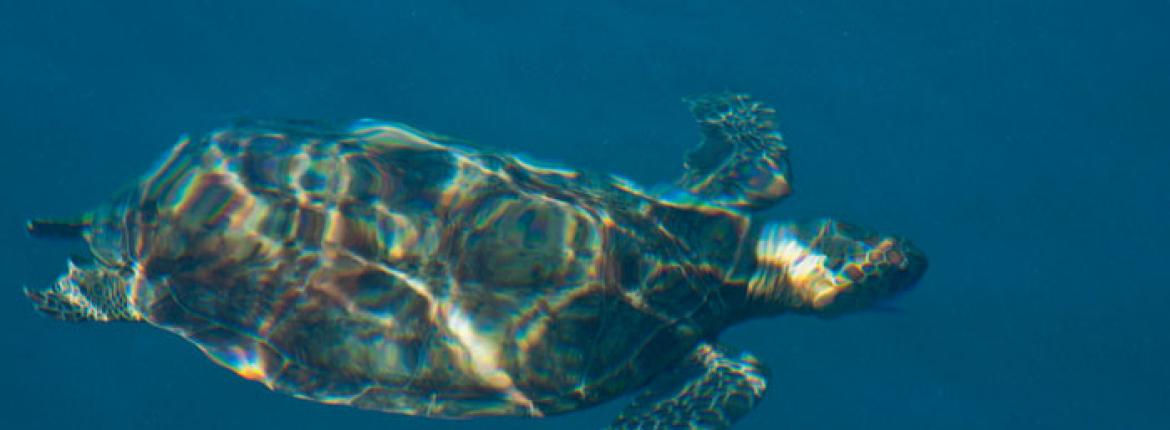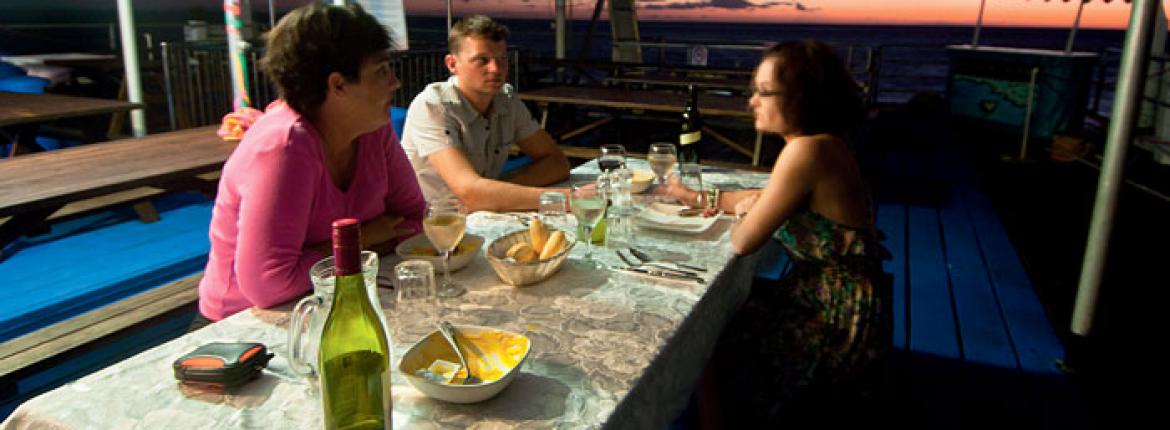It’s amazing how obliging fish can be. It must have taken them days to choreograph this morning’s performance.
They started around 7.30am, the instant I peered through my mask into their warm watery world of the Great Barrier Reef. With names like flame angel and yellow longnose, they entered ocean-right with purple eyebrows, yellow tails, blue lips. From ocean-left: green fins, yellow bodies, orange eyes, all in a never-ending quest. Perhaps they will never find what they’re looking for.
As I scanned them like a slow motion game of tennis, there was that noise again. A soprano didgeridoo? Looking around, I realized it was my own voice gulping and grunting in wonderment, surfacing through the snorkel.
It wasn’t just the outlandish costumes that had me doing double-takes and trying to breathe water; for the 45 minutes that I drifted with the current this way, tugged myself along the floating guide ropes that way, I was overwhelmed by the sheer number of fish.
There were so many, I was surprised the Coral Sea had room for them all. And where had they been before now? The day before, there had been far fewer fish but dozens more snorkelers and scuba divers who, like me, had come out to Fantasea’s Hardy Reef pontoon on the day trip. When they returned to the 80km distant mainland at 2.30pm, only four of us remained to sleep over on the pontoon. 
Amanda and Murray were celebrating their second wedding anniversary. Diana, who moved to Airlie Beach two years ago, said: “I’ve met people who have spent all their lives in this part of Australia and have never been to the Reef.” Me, I wanted to see the only living structure that, it is said, can be seen from space.
The almost 3000 separate reefs that form the Great Barrier Reef sprawl over more area than New Zealand and Ireland combined and are home to so many species of fish and coral and starfish and mollusc and sea snakes and turtles and sharks and yes, even spiders, that entering their world is excitement itself. Snorkeling the Reef was a privilege, but sleeping out there corrupted us. Within an hour of the four of us having the pontoon, the Reef, the sky to ourselves, we were conspiring how to repulse the invasion of the hordes at 11am the next day.
Meanwhile, Paul, boss of the pontoon, took us in the tender along Hardy Reef, all aquamarine and edged by bottomless blue. Kez, our inimitable hostess, served drinks and the evening meal on deck, as we watched the sun set behind Queensland. In the darkness, we heard splashes big enough to be a person falling overboard, but it was just those tropical tyrants, trevally, hunting their evening meal. The sun deck lounge chairs become star-watching chairs and, when I woke from a snooze, the moon was dancing on the Reef.
The hordes did invade and stole us back to Airlie Beach. Yet even now, I can close my eyes and see that swirl of blue and red and green. It’s amazing how obliging fish can be.
Reported by John Bennett for our AA Directions Summer 2013 issue

